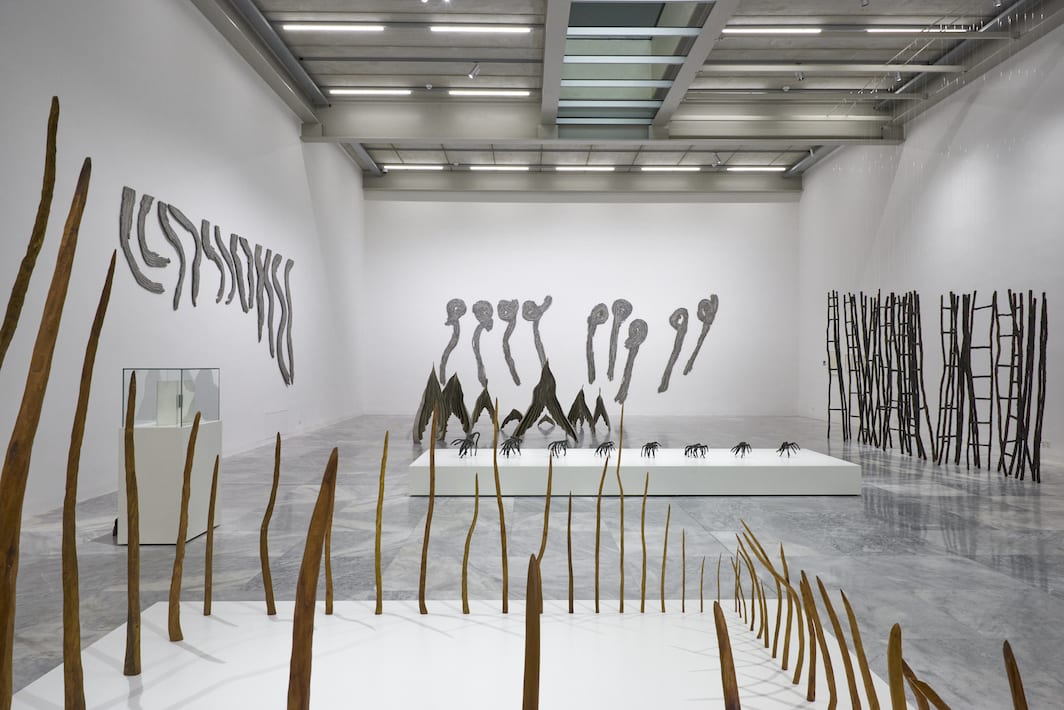Rosemarie Castoro: Land of Lashes Exhibition at MAK Contemporary
BY YUKI HIGASHINO
Working at the confluence of Minimalism, post-Minimalism, and performance, Rosemarie Castoro’s works synthesize the static presence of sculpture with the dynamic physicality of the human body. The most illuminating element in the exhibition is a black-and-white photograph, Self-portrait, New York, 1970, that shows the artist hanging horizontally from the ceiling using ropes while striking a pose reminiscent of a ballet dancer in mid-leap. The hints at Castoro’s interest in kinesthetics, informed by documentation of performances by her contemporaries. Inspired by the movements arrested by the camera’s lens, Castoro aimed to create material permanence from fleeting motion.
For instance, a group of works from Castoro’s “Brushstrokes” series literalizes the most romanticized gesture in art, the brushstroke, heightened to an almost comical apex by the cult of Abstract Expressionism. Castoro bestowed a three-dimensional presence to the ultimate certificate of authenticity, the signature of an artist’s hand, by rendering it in Masonite as a wall relief. The fact that careful molding, cutting, and surface treatment with graphite and marble dust was necessary for their production testifies to the artist’s wry humor.
While Castoro was clearly engaged with the varied practices of her peers—such as the material experimentation of Eva Hesse, or Carl Andre’s seriality—her work’s Pop sensibility distinguishes it from that of her colleagues (its affinity with Lichtenstein’s own series of “Brushstrokes” is hard to miss). However, her aesthetic was distinct from the bright and colorful artificiality of Pop. It was grungier, with the quality of underground graphics. Such an impression may seem contradictory for an artist who was unambiguously entangled with the concerns of the 1960s New York avant-garde. This incongruity is what liberates Castoro’s works from the confines of past movements and firmly places them in the contemporary register.













































































































































































